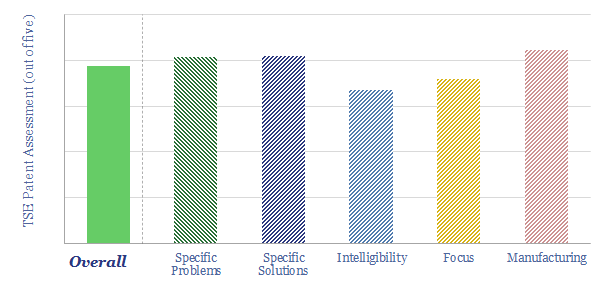NET Power has developed a breakthrough power generation technology, combusting natural gas and pure oxygen in an atmosphere of pure CO2. Thus the combustion products are a pure mix of CO2 and H2O. The CO2 can easily be sequestered, yielding CO2 intensity of 0.04-0.08 kg/kWh, 98-99% below the current US power grid. Costs are 6-8c/kWh. This NET Power technology review presents our conclusions from patents.
NET Power was founded in 2010, is headquartered in Durham NC, has >30 employees, and has developed an efficient, gas-fired power generation technology with “in-built CCS”.
Specifically, the reactor produces a pure stream of H2O and CO2, which can easily be dehydrated, then a portion of the CO2 can be siphoned off for disposal, while the remainder is re-circulated, as the working fluid in the thermodynamic cycle.
In 2022, Rice Acquisition Corp II agreed to combine with NET Power, at an EV of $1.5bn, with $235M of commitments from the Rice family, Occidental Petroleum and others.
NET Power aims to generate reliable electricity from natural gas and capture the emissions. CO2 intensity is stated at 0.04-0.08 kg/kWh, comparable to utility-scale solar, and 98-99% below the current US power grid at 0.4 kg/kWh.
We first looked at NET Power in a research note in 2019, exploring how next-generation combustion technologies could facilitate easier capture of CO2 (note here).
Levelized costs of power generation are estimated in a range of 6-8c/kWh, assuming $3.5/mcf hub gas prices (and by extension, $4.5-5.5/mcf input gas prices), in our model of NET Power’s oxy-combustion process linked here. The usual caveats apply that levelized cost calculations can be materially lower, or higher, in different contexts.
How does the technology work? The technology is a modified and heavily recuperated super-critical CO2 Brayton cycle. As helpful background reading, we would recommend to start with our overview of thermodynamics, and our overview of super-critical CO2.
The patents give some helpful details on pressures, temperatures, heat exchange, Cp/Cv ratios, and innovations to maximize efficiency; including recuperating waste heat from the air separation plant (which produces the pure O2 for the combustion process) back into the CO2 stream. Details are in the data-file.
What challenges for super-critical CO2 Brayton Cycles? There are six core challenges with super-critical CO2 Brayton cycles. They are outlined in the data-file, along with our assessment of how NET Power addresses the challenges, based on its patents.
Can we de-risk Net Power’s technology? Our NET Power technology review shows over ten years of progress, refining the design of efficient power generation cycles using CO2 as the working fluid. The patents show a moat around several aspects of the technology.
